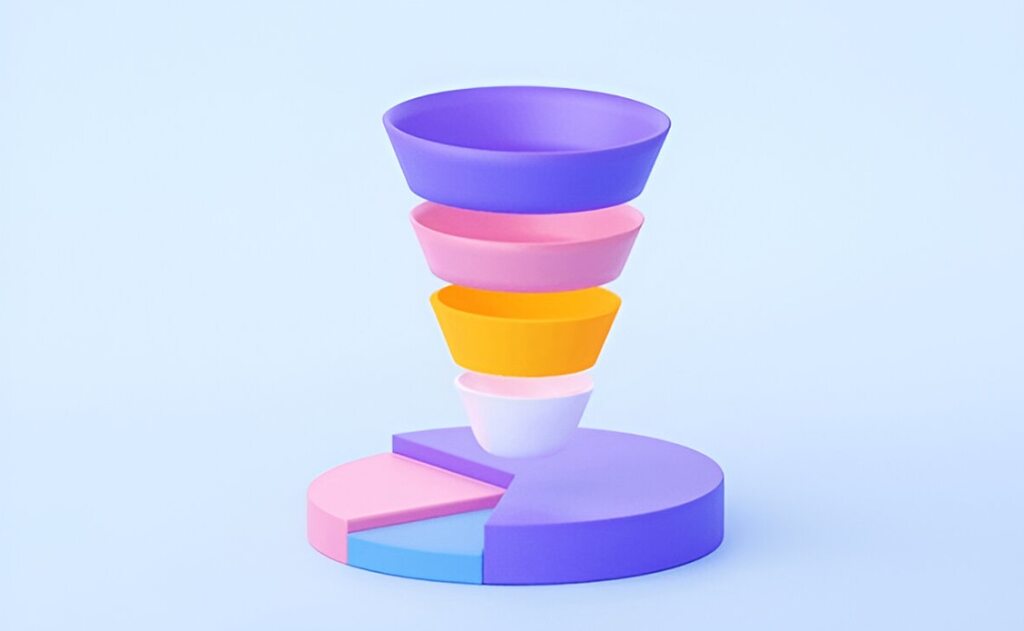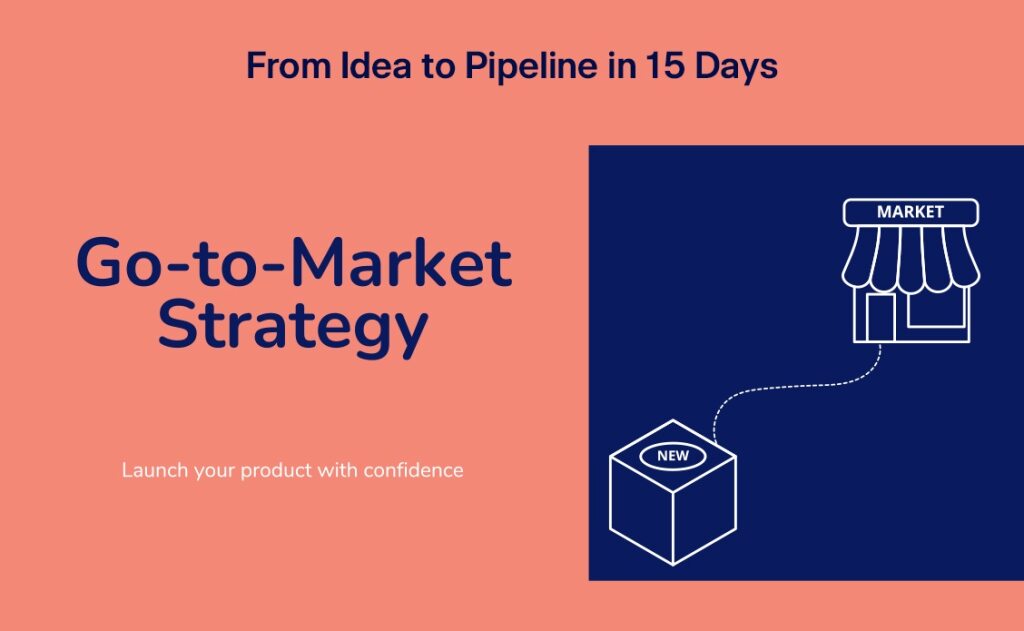The $2M Revenue Recovery:
Three months ago, a Series B founder called me in crisis. Despite 300+ monthly leads and a full sales team, their pipeline-to-close rate had dropped to 8%—industry average is 25%. Deals were stalling in “negotiation” for months. The board was questioning sales leadership. The real problem? They had pipeline volume without conversion architecture.
Today, that same company converts at 31% with the same lead volume, adding $2M+ in annualized revenue without changing their marketing spend or team size. The transformation wasn’t motivational speeches or new CRM features—it was systematic pipeline redesign.
Pipeline chaos isn’t a people problem. It’s a process problem masquerading as a performance issue.
At NextAccel, we’ve diagnosed pipeline dysfunction across 60+ companies. Here’s the step-by-step execution model that transforms pipeline chaos into predictable conversion flow.
Step 1: DEFINE Your Conversion Leakage Points
The Diagnostic Reality Check:
“Of your last 100 lost opportunities, can you categorize them by the specific stage where momentum died? If you can’t map failure patterns, you’re treating symptoms instead of fixing systemic conversion breaks.”
Most pipeline optimization fails because teams confuse activity metrics with conversion intelligence. Your pipeline isn’t broken because reps aren’t making enough calls—it’s broken because prospects lose buying momentum at predictable friction points.
The NextAccel Pipeline Leak Analysis:
- Unqualified Entry (30-40% of losses): Marketing and sales define “qualified” differently, flooding pipeline with prospects who were never buyers
- Discovery Depth Failure (25-35% of losses): Sales teams skip pain validation to rush toward solutions, creating objection-heavy negotiations
- Value-Price Disconnect (20-30% of losses): Prospects aren’t educated on outcomes before seeing investment, triggering automatic price resistance
- Decision Authority Confusion (15-25% of losses): Teams sell to influencers while economic buyers remain uninvolved and uncommitted
The Revenue Reality: If you’re converting 15% of pipeline instead of 25%, you’re leaving 40% of potential revenue on the table. For a $10M ARR business, that’s $4M in lost revenue annually.
Tactical Implementation:
- Create loss reason taxonomy by stage, stakeholder, and objection type
- Map conversion rates by lead source to identify quality variance
- Analyze sales cycle length by deal size to spot velocity patterns
- Track champion engagement metrics to predict internal selling success
Step 2: DEPLOY Buyer-Aligned Pipeline Architecture
The Strategic Question: “Is your pipeline designed around how prospects want to buy, or how your sales team wants to sell?”
Most pipelines optimize for sales team workflow instead of buyer psychology. The result: artificial progression that doesn’t match actual purchase decision-making, creating stalls and objections at every stage.
The NextAccel Conversion-Optimized Pipeline Model:
Stage 1 – Problem Recognition: Prospect acknowledges current state isn’t sustainable
- Sales Objective: Quantify pain without pitching solutions
- Exit Criteria: Prospect articulates business impact of status quo
- Conversion Rate: 65-75% (high-quality leads should progress here)
Stage 2 – Solution Exploration: Prospect evaluates approach options
- Sales Objective: Position your methodology as optimal path
- Exit Criteria: Prospect agrees your approach solves their specific problem
- Conversion Rate: 45-55% (methodology alignment is critical)
Stage 3 – Vendor Evaluation: Prospect compares specific providers
- Sales Objective: Differentiate on outcomes, not features
- Exit Criteria: Prospect sees you as uniquely qualified
- Conversion Rate: 35-45% (competitive positioning matters)
Stage 4 – Purchase Decision: Prospect builds internal business case
- Sales Objective: Provide tools for champion to sell internally
- Exit Criteria: Economic buyer commits with terms
- Conversion Rate: 60-70% (if properly qualified)
The Critical Insight: Each stage requires different behaviors, content, and metrics. Pipeline chaos happens when reps use Stage 3 tactics in Stage 1 conversations.
Tactical Implementation:
- Stage-Specific Talk Tracks: Scripts aligned to buyer psychology, not product features
- Progression Triggers: Clear criteria for advancing vs. nurturing vs. disqualifying
- Content Arsenal: Assets that build momentum between sales interactions
- Stakeholder Mapping: Multi-threaded approach for complex B2B decisions
Step 3: DELIVER Pipeline Performance Intelligence
The Optimization Reality: “Most pipeline stalls aren’t caused by price objections—they’re caused by prospects losing momentum between sales interactions. If you can’t predict which deals will close based on leading indicators, you’re managing pipeline reactively.”
Traditional CRM reporting tracks lagging indicators (deals closed, revenue) without the predictive intelligence that drives consistent conversion improvement.
The NextAccel Pipeline Intelligence Stack:
Leading Conversion Indicators:
- Discovery Depth Score: Percentage of qualification questions answered with specificity
- Stakeholder Engagement Rate: Decision influencers actively participating vs. delegating
- Content Consumption Analytics: Assets prospects engage with internally (buying signals)
- Momentum Velocity: Days between touchpoints and measurable progress milestones
Conversion Velocity Systems:
- Between-Meeting Momentum: Value-building content delivered automatically
- Implementation Planning: Tools that make purchase feel concrete and achievable
- Timeline Pressure: Strategic scarcity through limited availability
- Champion Development: Exclusive access that builds internal advocacy
Quarterly Pipeline Health Diagnostic:
“If we doubled our lead volume tomorrow, which part of our conversion process would break first? Fix that constraint before scaling activity.”
Common Pipeline Bottlenecks:
- Discovery Capacity: Reps can’t handle qualification volume at required depth
- Proposal Development: Custom scoping becomes resource constraint
- Technical Evaluation: Proof-of-concept process doesn’t scale efficiently
- Legal/Procurement: Contract negotiation creates unnecessary friction
The Systematic Fix Protocol:
- Identify Constraint: Which stage has lowest conversion rate?
- Root Cause Analysis: Why do qualified prospects die there?
- Process Redesign: What specific changes eliminate that friction?
- Behavioral Training: How do reps need to operate differently?
- Technology Support: Which tools enhance human performance?
Performance Benchmarking:
High-converting pipeline systems typically achieve:
- Stage 1-2 Conversion: 65-75% (problem recognition to solution exploration)
- Stage 2-3 Conversion: 45-55% (solution exploration to vendor evaluation)
- Stage 3-4 Conversion: 35-45% (vendor evaluation to purchase decision)
- Overall Pipeline Conversion: 25-35% (qualified opportunity to closed-won)
Final Framework: Predictability Drives Premium Valuations
“Pipeline conversion isn’t about motivating sales teams—it’s about eliminating systemic friction that prevents qualified prospects from buying.”
Your pipeline architecture isn’t just a sales tool—it’s proof of your revenue predictability. Acquirers pay premiums for companies that can systematically convert prospects into customers, not just generate leads.
When market conditions tighten or competition intensifies, systematic pipeline conversion becomes your revenue insurance policy. You control deal flow velocity instead of hoping prospects overcome purchasing friction independently.
The NextAccel Transformation Results:
- Pipeline Conversion: 15-25% baseline to 25-35% optimized
- Sales Cycle Velocity: 25-40% reduction in time-to-close
- Deal Size Premium: 15-30% increase in average contract value
- Revenue Predictability: 90%+ quarterly forecast accuracy
At NextAccel, we’ve helped dozens of founders transform chaotic pipelines into predictable conversion engines.
Ready to diagnose your pipeline conversion gaps?
Contact us for Pipeline Performance Audit in the next 90 days.





